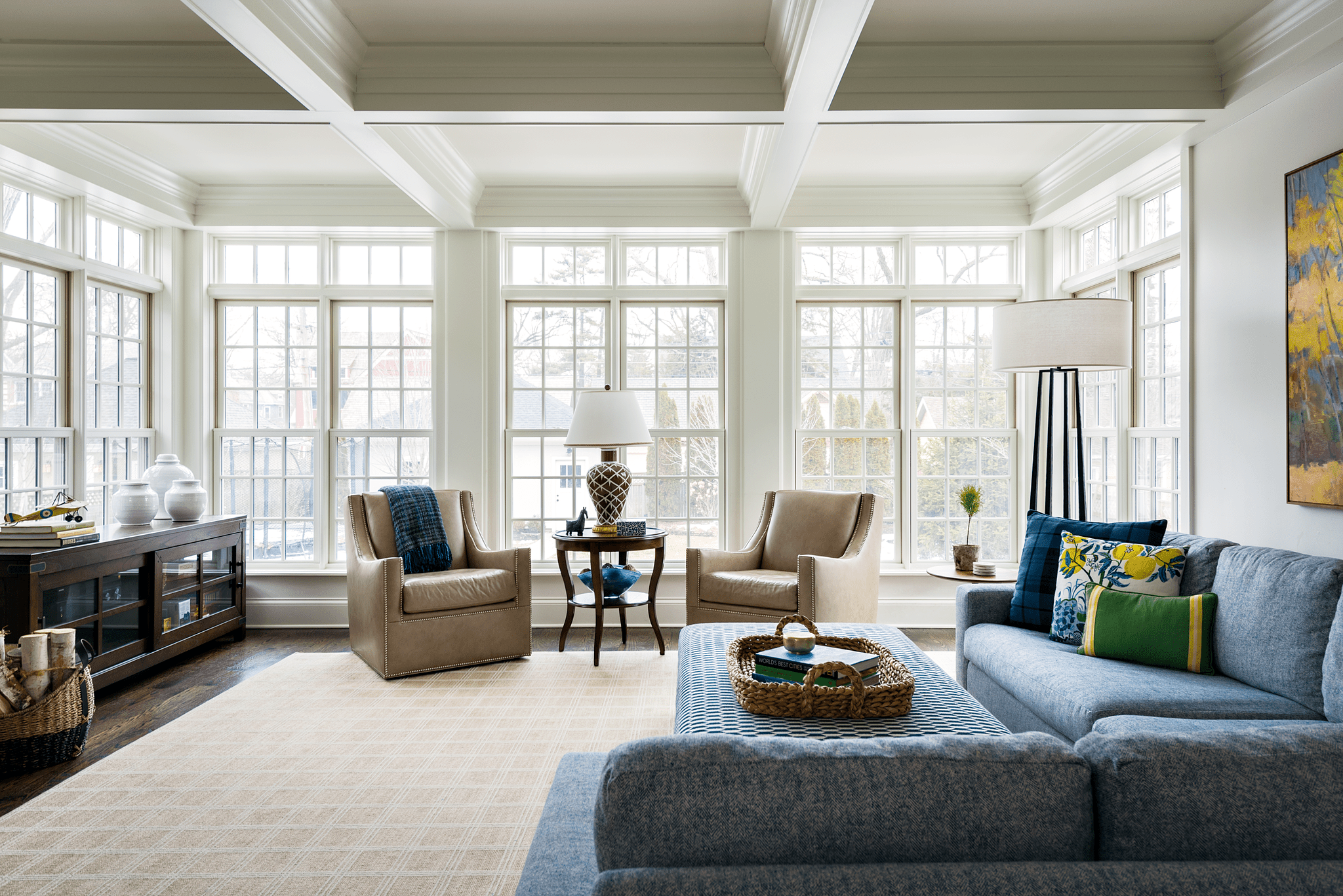Interior Design for Living Rooms

Table of Contents
Interior design is a big deal. When it comes to living spaces, the key thing on everyone’s mind is how we want our house to look. Let’s start with the most trafficked area in the house: the living room. Living room interior design is important for creating the correct tone in making your house warm and welcoming to family and friends alike. How can we tie everything together? When it comes to living rooms, the appropriate furniture, colors, and arrangement can make all the difference.
This beginner’s guide to living room design will walk you through the fundamentals of getting started and the procedures required to create a welcoming and comfortable living area.
It is critical to place furniture at the proper distance
First and foremost: whatever aspect of your living room interior design you are working on, you must be mindful of the fundamental measurements to be followed. These measurements are critical because they allow you to position everything correctly.
For example, your coffee table should be at least 15 to 18 inches away from your sofa, and your wall art should be around one-third the size of your sofa. Keep this in mind when buying and placing items. If you are buying a glass fronted display cabinet, for example, you will want to make sure it is not so large that it dominates the entire room!
A key measurement for rugs and sofas is that your couches should either be positioned over the rug or be at least 12 to 18 inches apart.
Avoid arranging furniture without thought
Whether you want a formal or informal design in your living room, having the proper furniture is critical. Sofas, armchairs, a center table, and a TV unit are all vital elements of living room furniture. L-shaped couches are ideal for small living rooms since they give an additional seating area. When placing furniture, keep the available space in mind, establish a focal point, enable dialogue, and consider traffic movement.
Before buying a purchase, consider your habits. If you enjoy binge-watching, you will probably need a more sophisticated TV with powerful speaker systems. If your living room has a balcony, you might wish to arrange a couple of seats facing it to enjoy the view.
Experiment with different patterns and textures for your living room rug
Area rugs, believe it or not, can make or break a space. Color, pattern, design, and material can all alter the appearance and feel of a room. The most crucial factor to consider when purchasing a rug is its size. Purchasing a size that is too large or too tiny might detract from the overall appearance. If you enjoy keeping up with trends, consider using an area rug instead of wall-to-wall carpeting to keep your floor toasty.
All furniture should preferably be placed on the rug, with 10 to 15 inches of bare space between the rug’s edges and the wall.
Combine ambient and task lighting
Lighting is a difficult challenge to master in any environment. We need fewer focal lights and more ambient lighting for living room interior design because ambient lighting produces a pleasant and calming mood in the living room. We recommend a combination of ambient lightings, such as false ceiling cove lights and recessed lights, as well as floor lamps and pendant lights. Living room lighting should originate from a variety of sources and should be free of glare.
Distribute the light sources across the living area on different levels. If you like, use a chandelier to create a focal point. Keep in mind that a hanging fixture has a minimum ceiling height of nine feet.
Make one wall into an accent wall by painting it a different color
With so many color palettes available, it might be tough to pick the appropriate paint color for your living room interior design. Never select the color of the paint first. Always consider how you want your space to feel, what furniture you have or need, and which colors might go well with it. This is a really effective trick. When compared to other features, painting walls is quite simple and inexpensive. Choose colors that speak to you.
This is the simplest method to add a splash of color to your living room interior design by changing the color of the walls. If you want to try something new, you can use wallpaper.
Display your personality by including statement artwork
When you have a basic or minimalist living room interior design on your side, let your walls do the talking. Wall art is a highly personal choice, and we recommend that you do not abandon it. When putting it on your living room wall, just be mindful of its form and size.
It might be a small painting scene of the streets of your favorite vacation spot or something more elaborate. Whatever it is, it deserves to be displayed on your walls. If you have a piece of statement artwork that you want to showcase, place it on the living room’s center wall. Mirrors on the wall might also be used to enhance depth and make the room seem bigger.
To keep the form, use accessories of varied sizes
Do not forget to use the proper accessories to provide a touch of warmth to your living room interior design. There is a lot you can put in different areas of your living room, from plants to souvenirs. Purchase a bouquet of dried flowers and watch YouTube tutorials to learn how to arrange them to make a gorgeous centerpiece. Small collectibles from trips can also be displayed on side tables or shelves.
Avoid over-accessorizing. Keep it simple with a single bouquet of flowers, little mementos, or candles. Consider the shape and size.
Conclusion
The living room is an important space in your home, which means you should take the task of decorating it seriously. However, it is also a great opportunity to show off your personality and really make your home your own. After all, you are going to be spending quite a lot of time there, so you should make sure it’s a space you want to be in!






